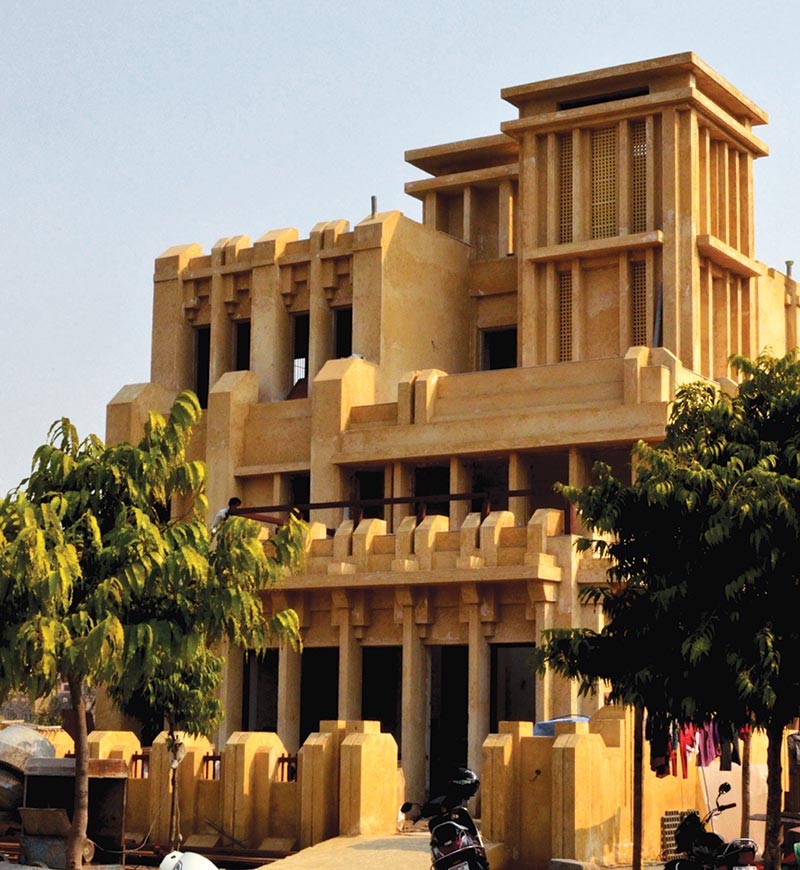

With the documented knowledge of building construction that has evolved over centuries and easy access to modern day technologies; buildings with positive response to the environment and minimal implications can be conceived and generated. Architecture emerging from the natural environment can be made to support, give back and revitalize the very surroundings from where it has generated. The aim is to integrate vernacular construction methods, locally available materials and modern day technologies that lead to buildings that are naturally responsive and environmentally sensitive. With this systematic design process, sustainable architecture becomes Regenerative Architecture
The biggest challenge is the inability to address environmental degradation in a holistic manner. Proper integration of Local-Global, Active- Passive systems and Tangible- Intangible aspects of design can result in a truly sustainable and regenerative architecture.
We have developed and improved many of the tangible aspects in building construction related to user experience. Building management systems facilitate comfortable, safe and secure environments. Similarly many active systems have reduced the energy consumption and minimized waste production. With the intervention of multiple active systems and global construction technologies, we are removing the very fundamentals of practice and design that have evolved over centuries. Traditional knowledge, locally available construction materials, vernacular techniques and practices are fading away from the mainstream construction industry at a very fast pace. This drastic shift from an evolutionary model to a modern one has resulted in huge amounts of informational data.
We admire...
Works of Geoffrey Bawa are exceptionally sustainable and green in their truest sense. Apart from inculcating various active systems for reduction in energy consumption, all his works are imbibed in their respective site surroundings. The buildings are not “Green” in isolation; rather they coexist with their surroundings and form self-sustainable environments. Majority of the works by the Sri Lankan integrate modern inventions with the traditional knowledge of respective regions. Buildings designed by him revitalize and renew their very environments and form regenerative architecture.















